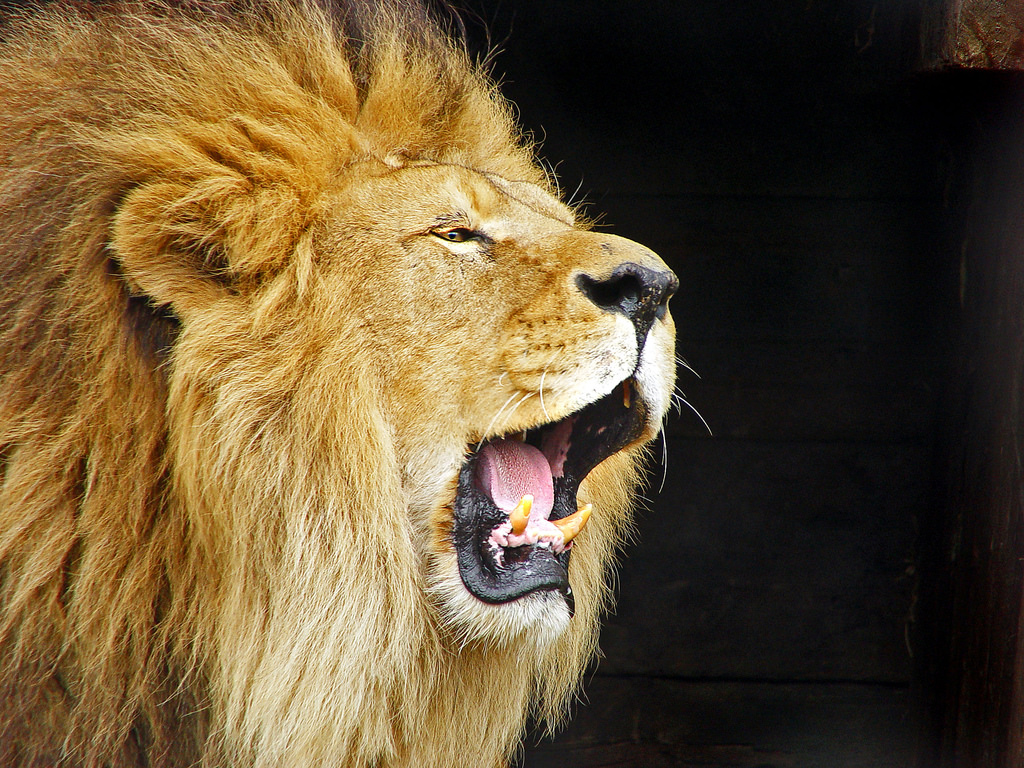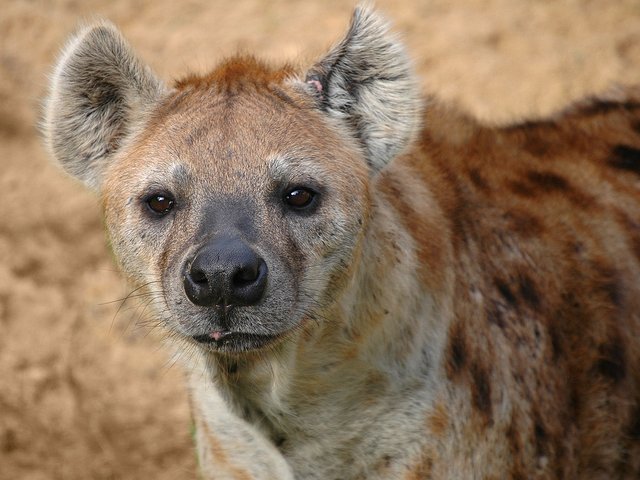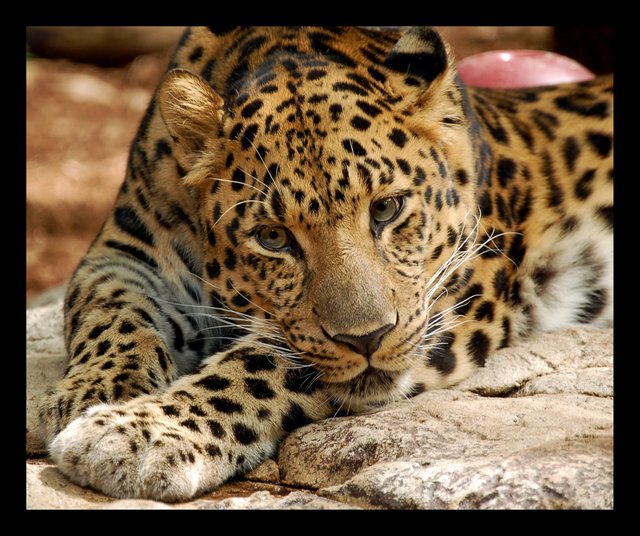Contemplating Notorious Man-Eaters In Human History #1

Hi everyone,
I would like to talk about "man-eater". This is a common word to describe any creatures which have the propensity to eat humans. They don't necessarily prey on humans as a part of their hunting pattern but if there is no other prey or they were threatened by humans, eating them would not be the end of the world. We have seen a lot of movies which illustrated various unfortunate accident of animals which hunt human such as Jaws and Anaconda but don't let that movie fool you. Even though some of it might be true but the majority of it was exaggerated. Some of the cases which involved man-eating could be accidental but some of the known man-eating creatures have incorporated humans as a part of their usual diet so it would be unfortunate if you come across to one of the creatures that I'm about to mention. Without further ado, let's immerse ourselves in the topic.
The Njombe's Man Eater
Panthera Leo or commonly known as the lion is one of the most interesting Felidae (Cats) which exhibit an apparent sexual dimorphism characteristic. The male lion is equipped with a prominent mane which is the most distinctive features of this creature. Really, you would not just say "Hey, it is a tiger" when you saw an animal with a mane. This animal has been listed as vulnerable to extinct in the IUCN red list due to habitat loss and poaching. They're commonly found in the open grassland and Savannah area, living in groups which are called prides. Every single pride would usually consist of a few males, a lot of lionesses and a few cubs of their own.
A human is an unusual diet of this animal. Some studies indicate that humans only act as a supplement for them. Like how we have to consume vegetables and fruits for the vitamins, humans are the last prey which would be hunted by a pride of lions. There are a few reasons why this animal prey on humans and some of the most prominent one are tooth decay and prey depletion. In a book entitled "The Lions of Tsavo: Exploring the Legacy of Africa's Notorious Man-Eaters", lions are depicted as monstrous human eaters. They went to the Kenya-Uganda Railway construction site, killed and ate 28 railway workers over the period of 9 months in 1898. According to one of the hunters who killed the pride, the appearances of the lion were unusual. They were bigger, some male lions have little to no mane and some of their teeth are found to decay.
It is speculated that a sick lion is prone to man-eating compared to the other, healthy lions. This can be due to the fact that they are not well enough to catch their own prey, hence a human seems like a perfectly suitable prey. In Tanzania. there are more than 1000 people who had been attacked by lions between the year of 1988 to 2009. The attack usually happened a week after the full moon, where the surrounding environment is much darker than usual. In 2004, a man-eating lion was shot in Southern Tanzania after causing almost 40 documented human kills. The reason why this particular animal went amok can be attributed to the abscess accumulated underneath one of its teeth making it hard for them to chew. The man-eaters profile fit the one who has been found terrorising the railway worker back in 1898; they are bigger than the normal one, lacked mane and have some kind of problem-related to their tooth.

So what about the Njombe's man-eater? Njombe is one out of 31 regions located in Tanzania. The most interesting things about the incident happened in Njombe in 1932 revolved around a superstition that a pride of lions were controlled by a witch doctor who instructed the pride to commit the most brutal case of killing spree which is pretty much R-rated. The witch doctor was fired from his job, thus he started to use lions as a part of his vengeance scheme. This is one of the worst lion attacks incidence that occurred throughout the human history claiming up to 2000 lives. Their attack was quite coordinated, luring humans to go out of their homes before attacking them brutally to death. After being tormented for 15 years, a hunter named George Rushby came to put an end to the pride. He shot 15 lions to death which eventually brought peace to the region. The other lions of the pride abandoned the region, seeking a safer place to live in. The event occurs almost at the same time with the reinstatement of the witch doctor to his old job, so most of the locals believe that the witch doctor was no longer furious which make the pride of lions to go away. Poor George!
Even though the theory which stated that "a lion who has been enduring tooth decay or any problem related to its tooth would eat humans" sounds plausible, the majority of academicians disagree with that hypothesis. Of course, it would explain some of the cases but not the most of it. They proposed another hypothesis which is related to prey depletion in the area covered with a specific pride as a consequence of human's activities or human's ruling. For example, prior to the killing spree incident in Njombe, the government has cleared out quite a number of prey in that area to control rinderpest outbreak that has been killing the majority of the dairy farm animals.
This action reduced the number of prey available for lions which have been living close to the town of Njombe, forcing them to travel as far as 20 miles during the night to the nearest unsuspecting village, looking for food. As they get hungrier, instead of looking for any potential animal protein sources, they settled for human's flesh instead. It is one of the many hypotheses proposed to explain why the incident in Njombe took place.
The Beast Of Gévaudan

This is a particularly disturbing one. Til this day, it was never determined whether the beast which has been causing havoc in Gévaudan, one of the provinces in France, is a wolf, hyena or any other creatures which can be a ferocious man-eater. As this particular attack occur way back in 1700, the tale was surrounded by superstitious tales which range from the beast which has been sent by the God to punish sinful people to the existence of werewolf. If you have seen a TV-Series entitled Teenwolf, then you would understand.
France is a country with one of the most abundance records of wolf attacks on humans. There were almost 8000 documented fatal attacks recorded between the year of 1200 to 1920, so the beast of Gévaudan could be one of this wolves. The first attack caused by this particular beast can be traced back in June 1764 when a young girl was killed while tending her cattle in the eastern part of the province. None of the cattle was killed or be eaten and this is the first unofficial case of the beast attack. The first official one occurs after a 14 years old girl who was found dead in the town of Langogne. The beast of Gévaudan has caused 113 human's death and 98 of them were devoured. Even though wolf should be the easiest explanation regarding the animal which has been described as the beast of Gévaudan, the characteristic of the kills and the description of the creature told by survivors doesn't fit a wolf. Some academicians believe that the beast was actually hyena, a big hyena.
There are a few cases which described the attack of hyenas on human and some fossils which dated back to 280,000 years ago found human hairs in the dung of hyenas. This animal may have been eating humans for more than 200,000 years! They are a creature which used their teeth mainly for catching prey rather than their claws. They might be small and most of the times, a cowardly scavenger rather than a predator, but they can drive off some of the large predators such as lions and leopards from their kills. They can eat pretty much everything and in the year of 1960, some of the human's corpses have been eaten by a group of hyenas. Compared to the normal hyenas, man-eating hyenas are much bigger, intelligent and aggressive. They will wait outside the human's home and attack when a human opens a door. They target pretty much everyone with women, children and the old as their preferred prey.

Anyway, despite some of the efforts to take down the beast of Gévaudan including sending an army, it is pretty much intelligent to evade all of it making it one of the most cunning man-eaters. However, every legend has to end. The beast of Gévaudan was shot in 1767 by a local hunter named Jean Chastel. It is pretty ironic considering an army has been dispatched to catch this animal and failed. It was told that this hunter was using a silver bullet to kill the beast which is probably some made up the story but after the kill, Chastel split open the beast and found some of the human remains of its last victim which confirmed that this animal was indeed a ferocious man-eater.
Despite all of the evidence, little is known about the beast itself. One theory stated that the human attack was carried out by a pack of wolves or hyenas instead of a mighty, genetically enhanced beast.
The Panar Man-Eater
Another member of Felidae, leopard is one of the animals which are affected by habitat fragmentation and currently listed in the IUCN red list as a vulnerable species. They are usually killed for their skin and organs which occasionally smuggled for traditional medicine. They have a long body with a large skull but short leg compared to the other cat species. They are commonly mistaken for a jaguar which has similar appearances except for the size of rosettes which are much smaller on a leopard than the rosettes found on a jaguar. Doesn't matter, as if you encounter one in the wild, I suggest you turn around and walk away because some member of this species has conflicts with humans.
Leopard is one of the oldest human's predators which lives approximately 3 million years ago based on the fossil evidence found. There are some pieces of evidence which suggest they have been feeding on our ancestors since then based on the bite mark found on the fossils of hominid relatives. There are many subspecies of leopard and some of them prefer humans as prey given it was the right circumstances while the others prefer other animals as food. Among all of the human's eater in the leopard subspecies, Panar leopard is the deadliest. It lives in Panar province where it allegedly kills approximately 400 humans until it was killed by Jim Corbett in 1910, a renowned hunter.

I think I have mentioned above that normally, animals do not eat humans. They will only choose that human-eating path if they were injured or sick which make them helpless is catching other animals for food. Humans are the last resort for most of the man-eater except for the beast of Gevauden which prefers humans over the other dairy farm animals. Panar leopard has been injured by a trap set up by hunters which rendered it useless and can't compete with its normal prey. Leopards are relatively small compared to the other members of Felidae but make no mistake, they are capable of killing creatures which are bigger than them including humans.
Compared to the other subspecies of leopard, a man-eating leopard is much harder to track and catch as they might be lurking around the human's settlements looking for prey. They are considered far more dangerous than tigers and lions because:
- They can squeeze through small places which are considered impossible for any other members of Felidae.
- They need less water
- They are far more cunning and daring than any other Felidae
- They have a higher degree of self-preservation coupled with stealthy disappearance when they are being hunted by hunters
Can you imagine if a leopard is about the same size as any other Felidae? They would be unstoppable. Some other subspecies of leopards which are also known as the man-eating animals are:
- Leopard of Kahani (kills 200 humans)
- Leopard of Rudraprayag (kills 125 humans)
All of them were shot by Jim Corbett.
Putting aside the beast of Geuvaudan, eating humans is a part of survival techniques used by these animals. Obviously, they wouldn't prey on us unless they don't have any choices. In the next article, we would discuss some other animals which are notorious enough for them to kill and eat humans as part of their diet. Thank you for your attention and have a good day.
References and further reading materials
- Abigail Tucker. Smithsonian. The Most Ferocious Man-Eating Lions. Retrieved April 7, 2018, from https://www.smithsonianmag.com/science-nature/the-most-ferocious-man-eating-lions-2577288/
- Lorraine Boissoneault. Smithsonian. When the Beast of Gévaudan Terrorized France. Retrieved April 7, 2018, from https://www.smithsonianmag.com/history/beast-gevaudan-terrorized-france-countryside-180963820/
- World Atlas. The Most Deadly Man-Eating Lions In History. Retrieved April 7, 2018, from https://www.worldatlas.com/articles/the-most-dreaded-man-eating-lions-in-history.html
- Listverse. Top 10 Worst Man-Eaters In History. Retrieved April 7, 2018, from https://listverse.com/2010/10/16/top-10-worst-man-eaters-in-history/
- Wikipedia. Beast of Gévaudan. Retrieved April 7, 2018, from https://en.wikipedia.org/wiki/Beast_of_G%C3%A9vaudan
- Wikipedia. Leopard attack. Retrieved April 7, 2018, from https://en.wikipedia.org/wiki/Leopard_attack








A useful post, for those who want to understand it ..
I'm not sure what are you trying to imply but thanks for reading it anyway.
why you are not sure. ?? I say your post is useful for people who want to understand it.
So you don't want to understand it. Lol
I really want to understand it
All d best then 👍
yes thank you friends. I'm sorry if I have a misunderstanding
Whoa! Never thought the number would be this high. :o
Yeah, I'm quite surprised too when I did some reading for this article.
Do you know any information about Foxes are in the group of man-eaters? I'm asking it because, here, in the vicinity of my house there are lots of foxes. At first, they look very scared of us. When they see us, they tend to run away. However, I know they are in the class of predaceous animals. I don't know whether they can attact to us or not. But I can clearly say that; foxes are one of the most beautiful animals in the world. Thank you for this nice post for sharing with us btw.
Not to my knowledge, no. I don't think wolves would hunt humans for food. If they attacked, they are probably being threatened.
Hyenas really creeps me out. Do they usually hunt in groups??
Usually, they hunt alone but share their meals with the other hyenas. If the prey is too large for them to take down individually, then, they might team up.
Great! That's just so great. It sounds so scary teaming up for a bloody feast.
@chloroform, It brings me relief to know that these animals prey on humans as their last resort. However, i don't think that makes them any less harmful as one would think they only feed on humans on their worst day, but it doesn't stop them from attacking when they spot a human. Tell me a heathly lion will see a human and look away.
Highest regards!
Well, at least they won't actively hunt for humans. If they met humans face to face unintentionally, they might attack but in the case of attacks in Nyombe, the pride was actively looking for an unsuspecting village for them to feed.
I agree with you. Its quite unthinkable to have them hunt intentionally for us.
Man great text!
Thanks.
My take; see an animal that's different from a dog or domestic cat? RUN!
I believe the number of casualties have reduced in recent years due to urbanization and gradual extinction of these species.
Yes, @rharphelle. Somehow those animals were desperate to survive. Urbanisation and habitat loss have made the interaction between some of the most notorious predators and humans more likely.
How about a lion pet?
That depends. I'm not sure about a lion which is being kept as a pet. I think if the owner took care most of its food well, then, there is no reason for it to succumb to human eating behaviour.
Yeah, perhaps you're right. I heard that these wild animals are always scared of humans, at first sight before they think of attacking them.
Most of them would avoid interacting with humans. If they were threatened, then that's a different story.
On point